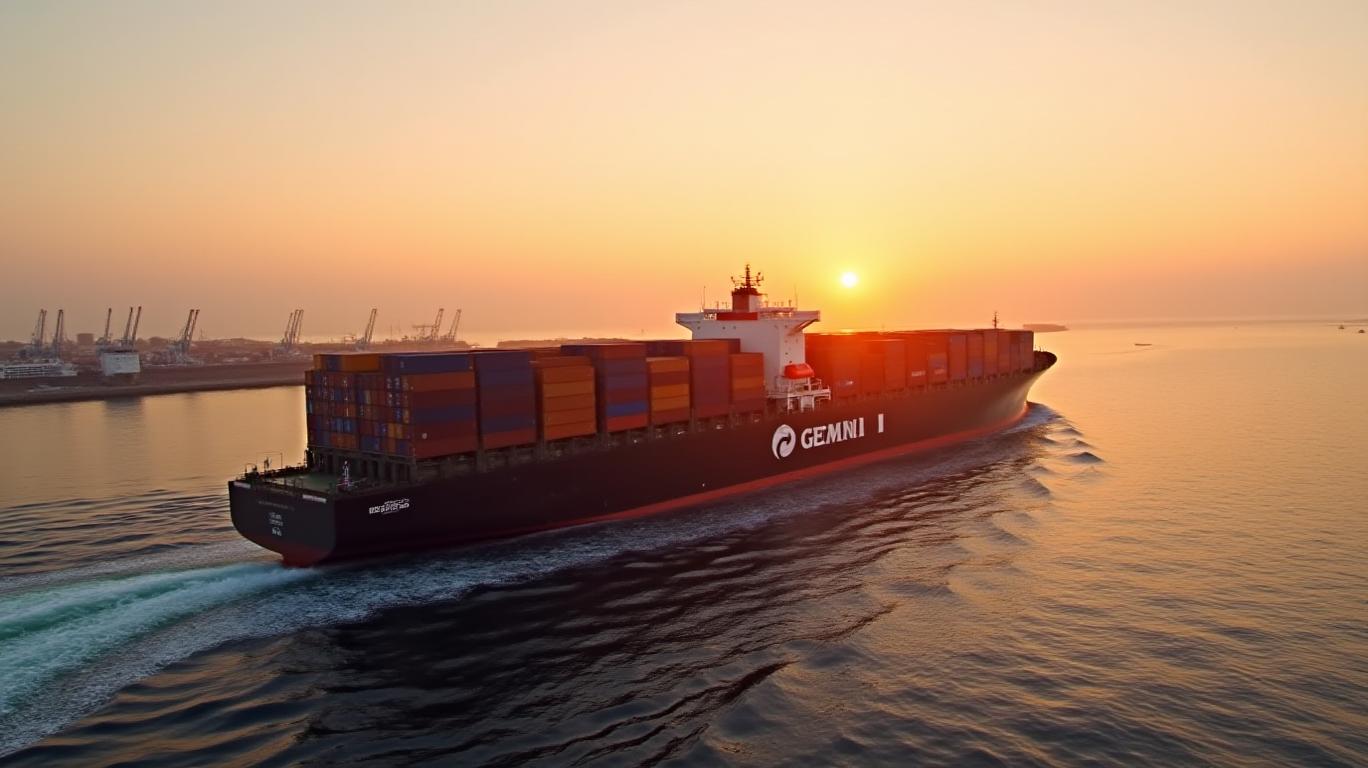Hapag-Lloyd: Navigating Turbulence with Operational Precision and Cost Discipline
The global shipping sector faces a perfect storm: geopolitical tensions in the Red Sea, fluctuating freight rates, and inflationary pressures. Amid this chaos, Hapag-Lloyd (HLAGG) has emerged as a standout performer, leveraging its Gemini network, aggressive cost discipline, and fortress balance sheet to outpace rivals. For investors seeking stability in a volatile market, Hapag-Lloyd’s structural advantages position it to thrive as rates normalize. Here’s why this is a buy now.
The Gemini Network: A Reliability Revolution

The Gemini Cooperation with Maersk, launched in early 2025, has delivered an unmatched 90% schedule reliability on East-West routes—far outpacing peers’ 50–75% average. This precision isn’t just a vanity metric: reliable delivery cuts costs for customers (e.g., retailers avoiding stockouts), fostering loyalty in a sector where 70% of revenue comes from top-tier clients.
The hub-and-spoke design of Gemini optimizes vessel deployment, reducing port congestion and fuel waste. For instance, smaller ships now serve China-U.S. routes, trimming overcapacity and improving utilization. This network effect is a moat: competitors can’t match Gemini’s scale or efficiency without similar alliances.
Aggressive Cost Cutting: A $1 Billion Fire Drill
Hapag-Lloyd’s Q1 2025 results revealed a 5% rise in unit costs to $1,317/TEU, driven by Red Sea rerouting and inflation. Yet this is a short-term hurdle, not a flaw. The company’s $1 billion+ cost-savings program targets a $1,100/TEU unit cost by 2030, a 16% reduction from 2025 levels.
The plan dissects costs surgically:
- Digitization: Automating route planning and container tracking to slash handling fees (which rose 9% in Q1).
- Fleet Efficiency: Retiring older vessels and expanding low-emission ships, cutting bunker costs (which fell 5% in Q1 despite rerouting).
- Terminal Leverage: Acquiring stakes in terminals like Le Havre’s CNMP LH (60% owned) to reduce third-party port fees.
Balance Sheet Fortitude: $8.7 Billion Liquidity Cushion
While the Q1 report cites €940 million net liquidity, this masks deeper strength. Hapag-Lloyd’s $8.7 billion liquidity reserve (cash + undrawn credit lines) is a war chest for navigating storms. Even after paying a €1.4 billion dividend in May 2025, net debt remains manageable at €8.1 billion, with an equity ratio of 62.1%—a sign of financial prudence.
This liquidity allows Hapag-Lloyd to:
- Invest in growth: Expanding terminals in India and Egypt (€104 million EBITDA from terminals in Q1).
- Withstand disruptions: Rerouting Red Sea traffic adds 2,000 nautical miles per voyage, but ample cash buffers the hit to margins.
Near-Term Catalysts: Growth Amid Volatility
- Terminal Expansions: The Le Havre terminal and a new facility in Damietta, Egypt, add capacity in high-growth regions.
- Flat Fleet Growth: A deliberate pause in ordering new vessels (only 26 on order by 2029) prevents overcapacity, stabilizing freight rates.
- Volume Momentum: 6% volume growth guidance is achievable given strong demand in Asia-Europe routes, even as U.S.-China tariffs bite.
Why Buy Now?
The shipping sector’s valuation has cratered as rates retreat from pandemic highs. Hapag-Lloyd trades at a 50% discount to its 2022 peak, despite Q1’s 18% revenue surge. With $528 million free cash flow in Q1 and a roadmap to $1,100/TEU unit costs, it’s primed to outperform peers as rates stabilize.
Risks
- Red Sea Conflict: Rerouting adds costs and delays.
- Trade Wars: U.S.-China tariffs could cut transpacific volumes.
But these are sector-wide issues, and Hapag-Lloyd’s operational edge mitigates risk better than rivals.
Conclusion: A Steady Hand in Chaos
Hapag-Lloyd isn’t just surviving—it’s redefining shipping efficiency. With Gemini’s reliability, a $1 billion cost firewall, and a balance sheet that laughs at macro chaos, this is a rare ship navigating turbulent seas with a compass. Investors who board now may find themselves on course for steady returns.
Action Item: Buy HLAGG ahead of Q2 results, with a 12-month price target of €40 (25% upside).
Note: All figures are preliminary and unaudited. Consult a financial advisor before investing.

Comments
No comments yet